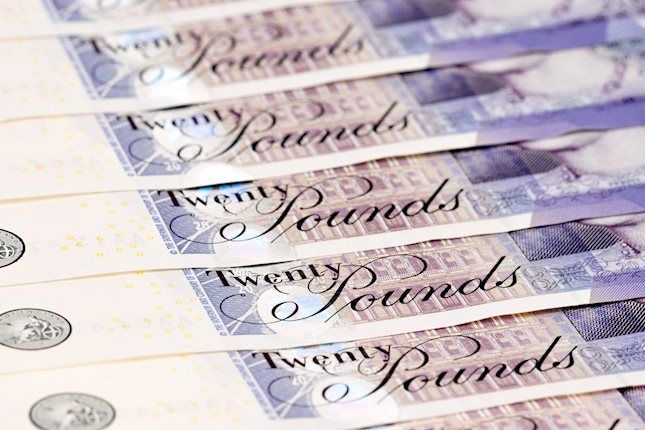Markets
The recent comeback momentum on US stock markets stalled yesterday with main US benchmarks suffering minor losses (-0.25%) following an astonishing rally over the past two weeks. Other directional trades continued. US Treasuries outperformed German Bunds with daily changes on the US curve ranging between -8.2 bps (2-yr) and -6.2 bps (30-yr) compared with -3.3 bps (5-yr) to -2.7 bps (30-yr) for Germany. US yields started slipping again as US traders joined yesterday’s actions. Fed Bowman said that should the incoming data continue to show that inflation is moving sustainably toward our 2% goal, it will become appropriate to gradually lower the federal funds rate to prevent monetary policy from becoming overly restrictive. The onus of several Fed comments is on gradual contrary to stealth easing discounted by US money markets for this year and next. In the run-up to this afternoon’s BLS payrolls revision, tomorrow’s PMI’s and Friday’s Powell speech in Jackson Hole, interest rate markets are clearly not (yet) backing down from their aggressive Fed easing bets. The US 2-yr yield closed back below 4% and seems drifting back to test the 3.85% support area. Failure to move south on softer data/dovish signals this week or early September (ISM’s & Payrolls) would be a strong signal that sufficient dovishness is discounted by now. The US 10-yr yield is already testing important support at 3.8%. The dollar continues suffering from the interest rate loss. The trade-weighted greenback closed at 101.44 yesterday from a start at 101.88. Key support arrives at 100.62 (Dec23 low), 99.58 (2023 low) and 98.98 (62% retracement on 2021/2022 DXY rally). Similar resistance in EUR/USD (close 1.1130) stands at 1.1139/1.1274/1.1276.
The US Bureau of Labour Statistics today publishes its preliminary annual benchmark revision (using Quarterly Census of Employment and Wages data). The June QCEW suggested that US job growth in the year through March was likely less robust than indicated. Ballpark figures point at a downward revision of about 60k/month on average. Today’s payrolls revision had over the past months been flagged as a potential gamechanger pushing markets and the Fed away from “higher for longer” into more outspoken rate cuts. Since the early August repositioning in US money markets, the BLS update likely lost market impact. From being a potential game changer to more of a confirmation. Nevertheless, any substantial (>50k/month) downward revision won’t go unnoticed and could tip markets more in the direction of a 50 bps rate cut lift-off.
News and views
PAP newswire reports that National Bank of Poland governor Glapinski indicated that he no longer can rule out a discussion on a monetary policy adjustment before 2026. Last month, he still advocated that view due to reigning uncertainty about the inflation outlook. According to Glapinski’s current assessment, decisions will depend on wage growth, consumption, energy prices and the economic situation of Poland’s trading partners. In this respect, the NBP governor indicated that the risk of higher inflation in Europe and the US was slightly disappearing and that rate cut expectations have increased. The Polish economy has grown more than expected in Q2 (1.5% Q/Q and 3.2% Y/Y) according to preliminary data released last week, Glapinski’s says that it’s not sure this trend will continue. Consumption will probably slow next year due to fading wage growth. This will make the international context a more important factor for Polish growth. Polish inflation reaccelerated in July to 1.5% M/M and 4.2% Y/Y (from 2.6% in June) as the government raised the cap on energy prices. The PLN 2-y swap rate declined from 5.10% to 4.94%. The EUR/PLN cross rate jumped from the 4.265 area to close near 4.276.
Canadian inflation (published yesterday) rose by 0.4% M/M in July causing the Y/Y figure to decelerate further from 2.7% to 2.5%, the slowest pace since March 2021. The monthly details were a bit mixed with goods prices rising a modest 0.2% M/M (0.3% Y/Y), but services reaccelerating 0.7% M/M (slowing to 4.4% Y/Y from 4.8%). Energy prices rose 1.6% M/M. Closely watched core inflation measures (core median 2.4% from 2.6% Y/Y and core trimmed mean 2.7% from 2.8% Y/Y) remain on a downward trajectory. The data are seen as a nihil obstat for the Bank of Canada to further reduce its policy rate (currently 4.5%) when it will meet next on September 4 (25 bps reduction fully discounted). At its July policy meeting, the BoC indicated a growing sensitivity for the risks to growth/excess supply in the economy.
This non-exhaustive information is based on short-term forecasts for expected developments on the financial markets. KBC Bank cannot guarantee that these forecasts will materialize and cannot be held liable in any way for direct or consequential loss arising from any use of this document or its content. The document is not intended as personalized investment advice and does not constitute a recommendation to buy, sell or hold investments described herein. Although information has been obtained from and is based upon sources KBC believes to be reliable, KBC does not guarantee the accuracy of this information, which may be incomplete or condensed. All opinions and estimates constitute a KBC judgment as of the data of the report and are subject to change without notice.
Recommended Content
Editors’ Picks

EUR/USD breaks below 1.1000 on stellar NFP
The buying bias in the Greenback gathers extra pace on Friday after the US economy created far more jobs than initially estimated in September, dragging EUR/USD to the area of new lows near 1.0950.

GBP/USD breaches 1.3100 after encouraging US Payrolls
The continuation of the uptrend in the US Dollar motivates GBP/USD to accelerates its losses and breaches 1.3100 the figure in the wake of the release of US NFP.

Gold rebounds from daily lows and flirts with $2,670
Following a post-NFP dip to the $2,640 region, Gold prices now embarks on an acceptable rebound and retest the area of $2,670 per ounce troy despite the marked advance in the US Dollar and rising US yields across the board.

US Payrolls surge in September, as 50bp rate cut ruled out
US payrolls data surprised on the upside in September, rising by 254k, smashing expectations of a 150k rise. The unemployment rate fell to 4.1% from 4.2%, average hourly earnings increased to a 4% YoY rate and there was a 72k upwards revision to the previous two months’ payrolls numbers.

RBA widely expected to keep key interest rate unchanged amid persisting price pressures
The Reserve Bank of Australia is likely to continue bucking the trend adopted by major central banks of the dovish policy pivot, opting to maintain the policy for the seventh consecutive meeting on Tuesday.

Five best Forex brokers in 2024
VERIFIED Choosing the best Forex broker in 2024 requires careful consideration of certain essential factors. With the wide array of options available, it is crucial to find a broker that aligns with your trading style, experience level, and financial goals.